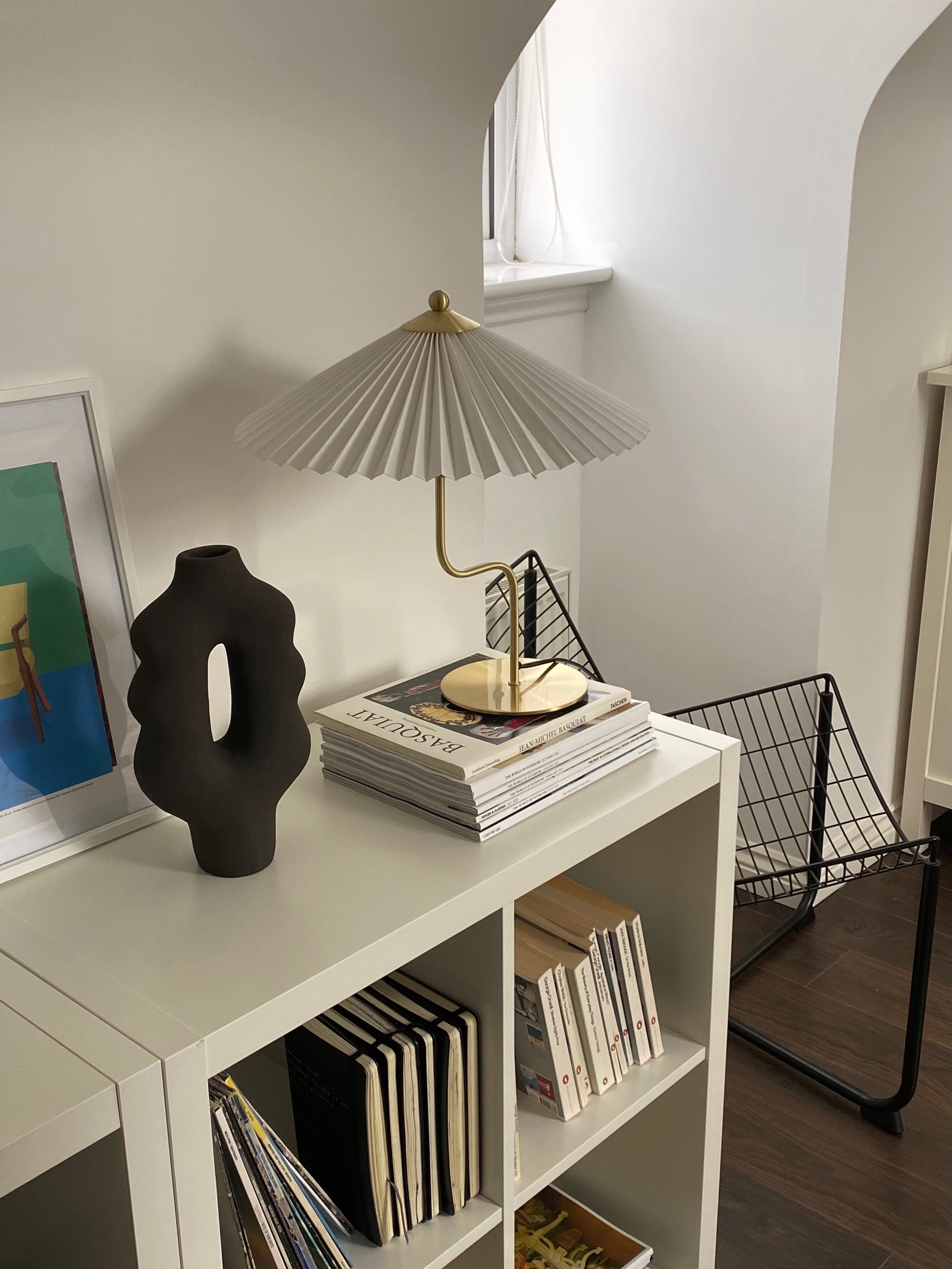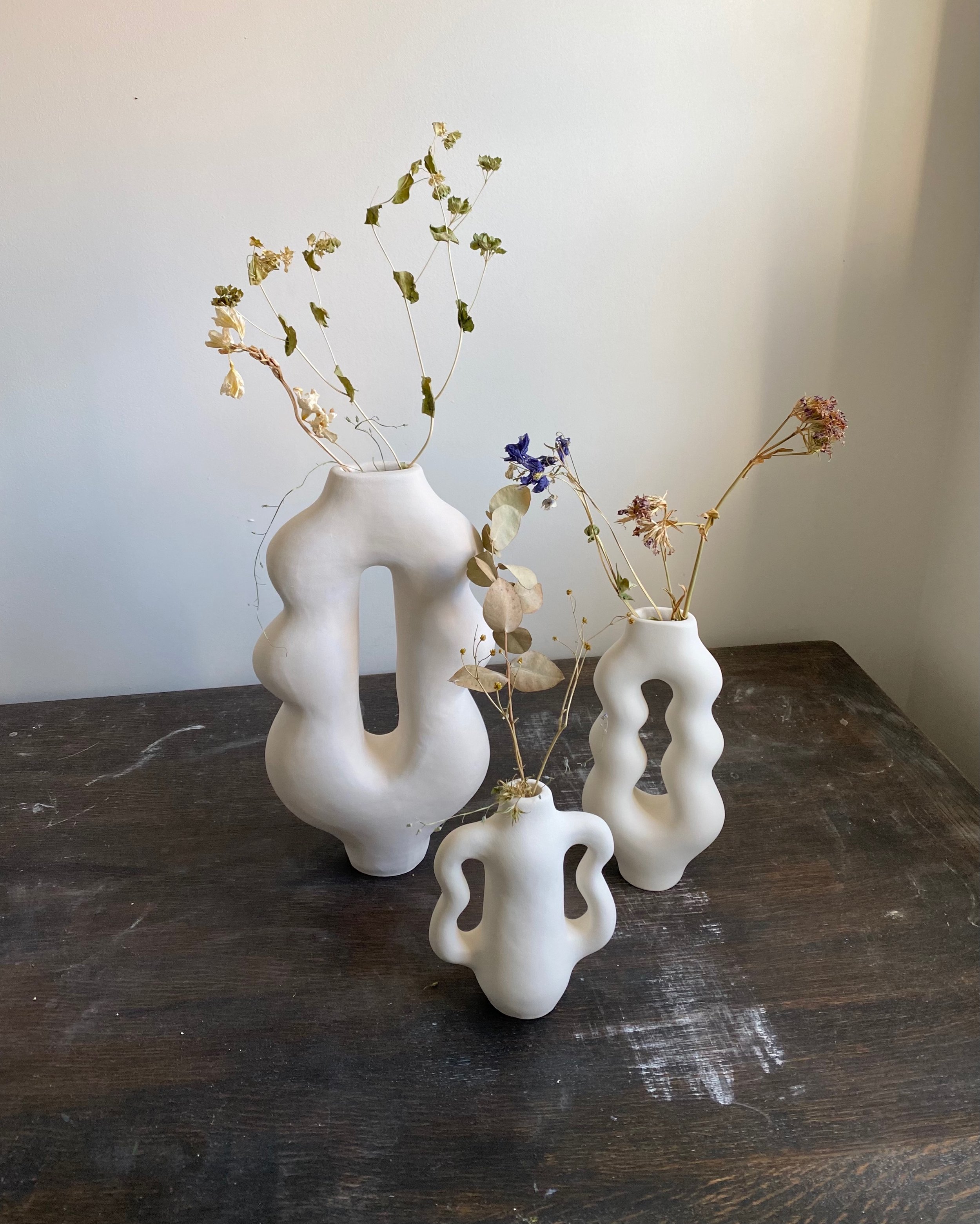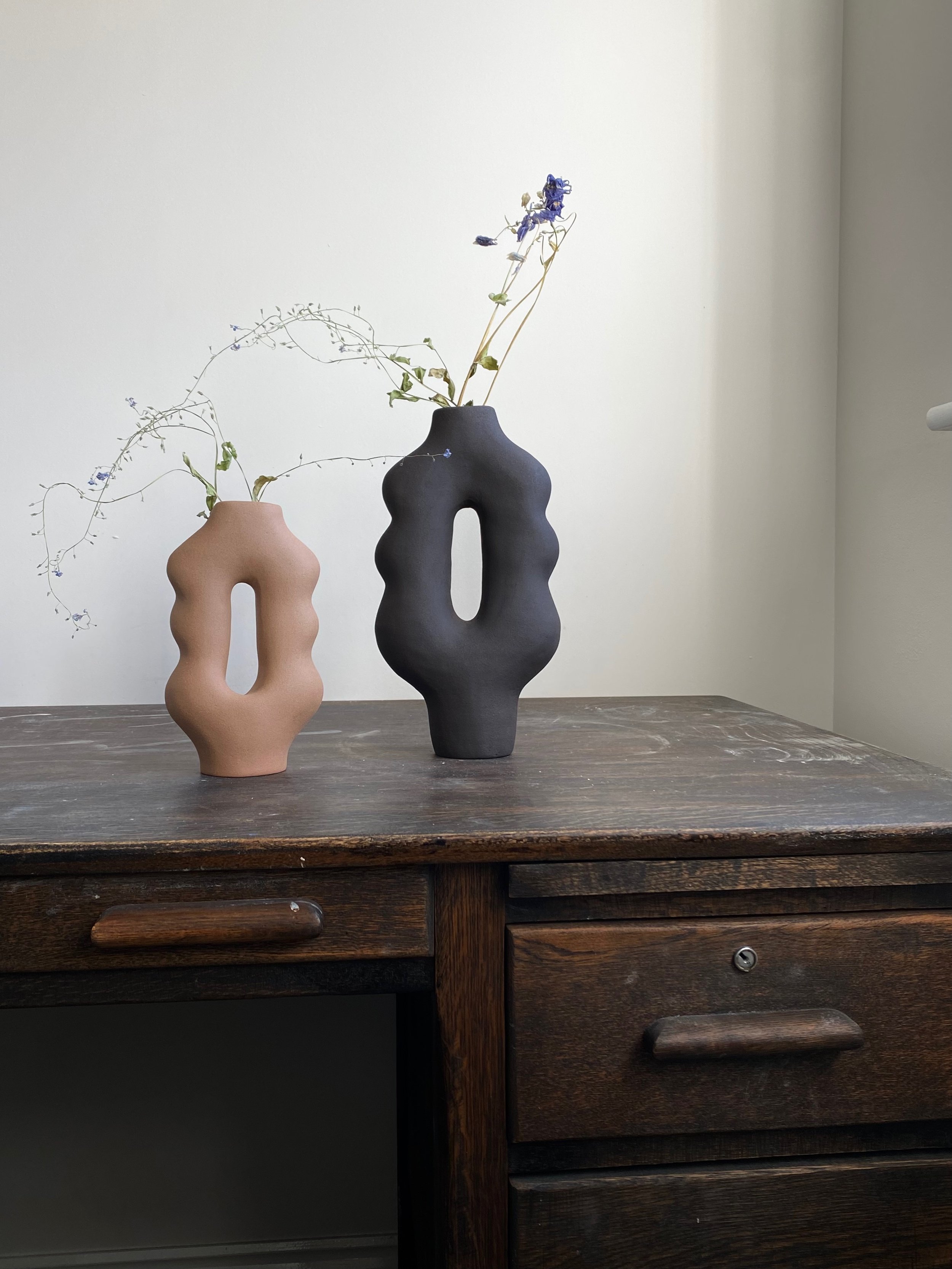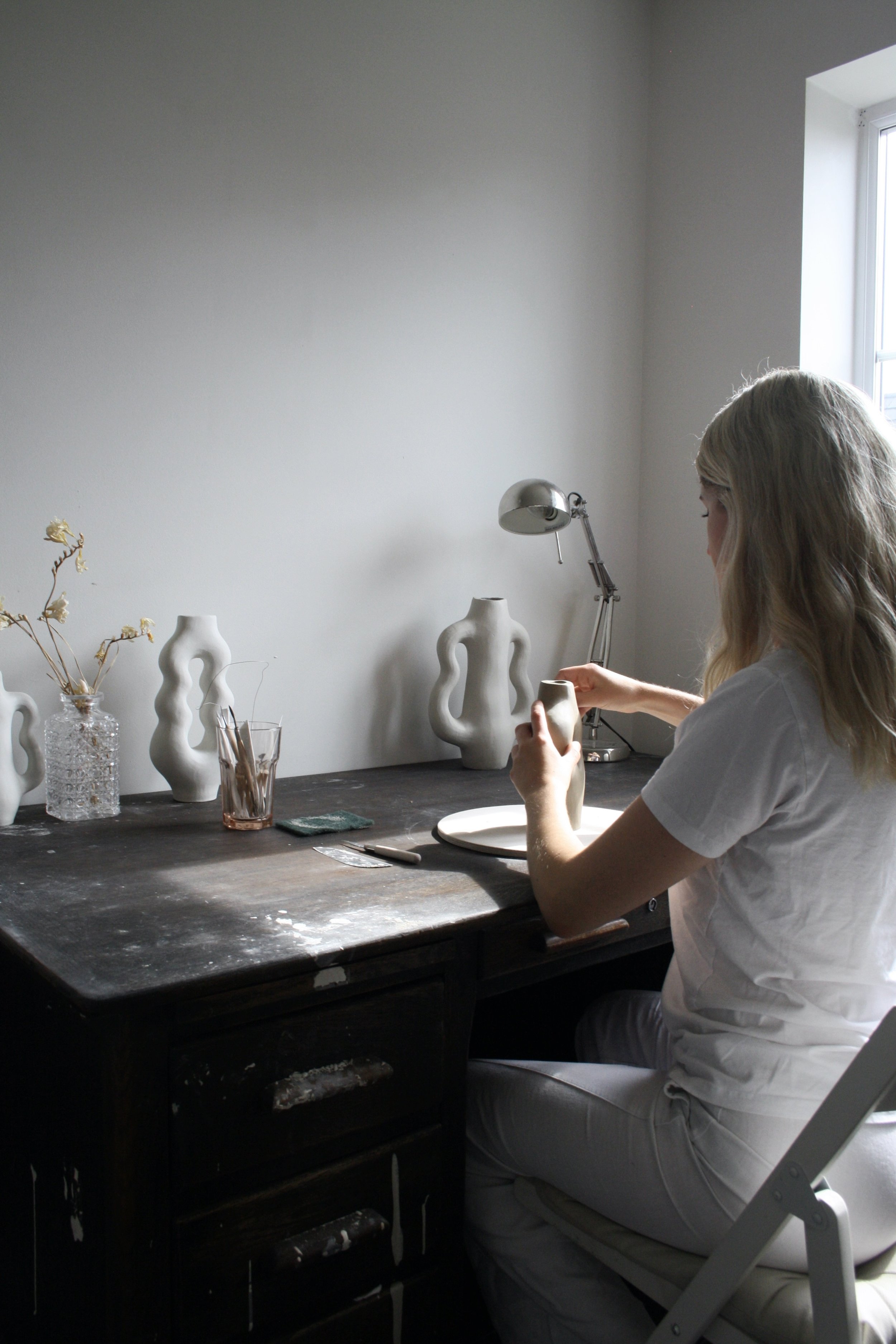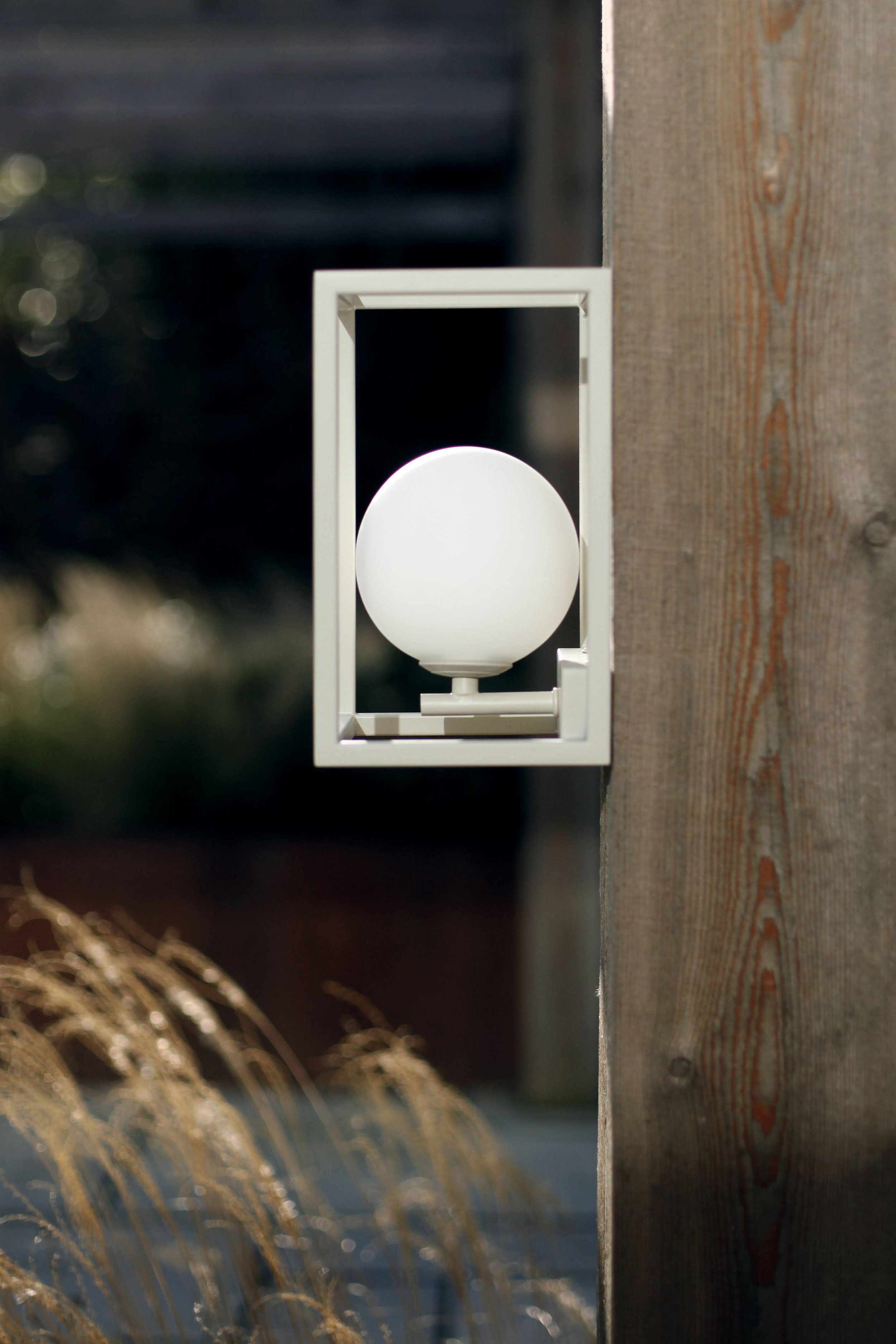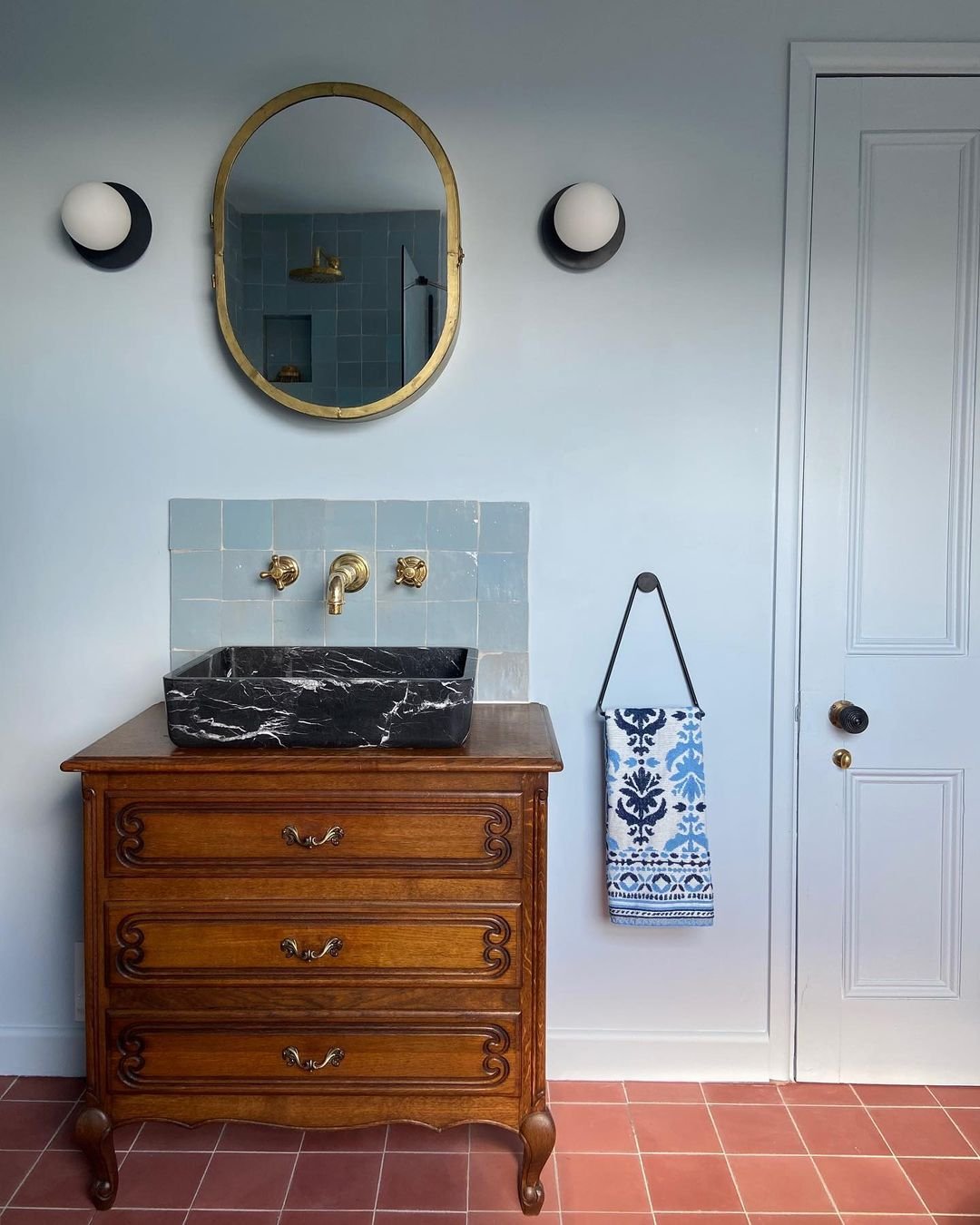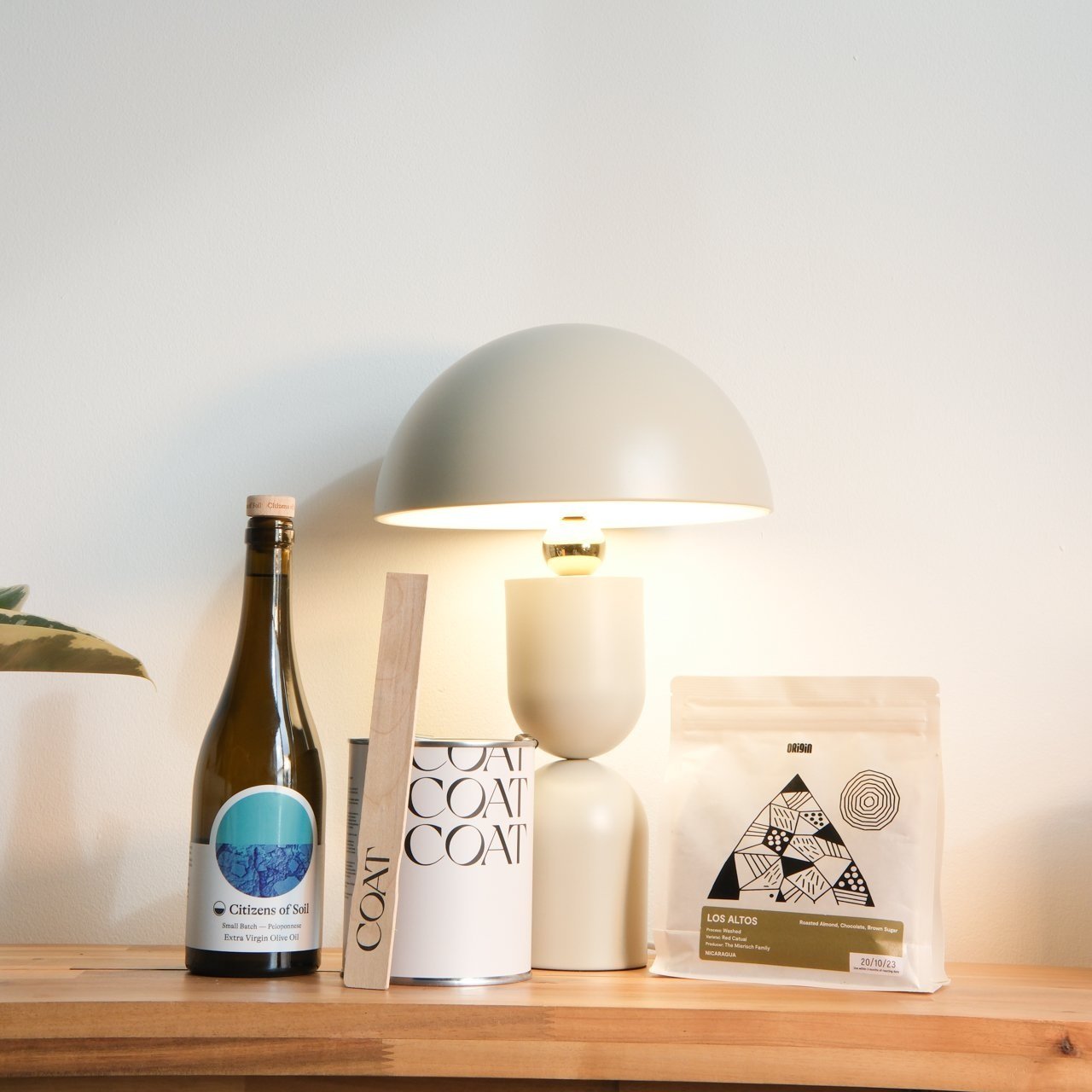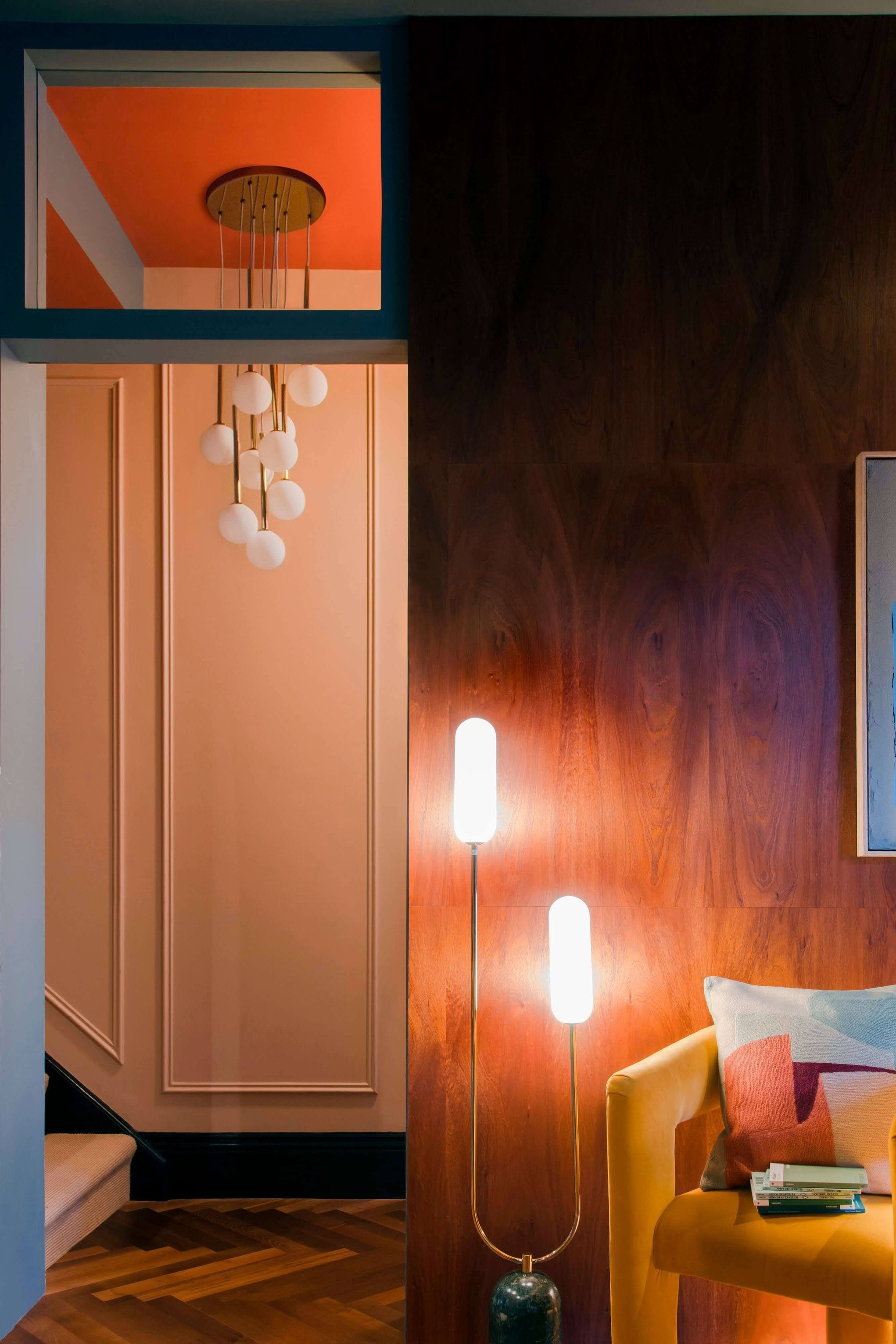Houseof x Annabel Cucuz
For our blog series brands we love, houseof are introducing you to Annabel Cucuz: a Sculptor from Staffordshire. Her work explores, what she refers to as 'misplaced nostalgia;' a world of unrealised futures envisioned within film sets.
Since graduating she began to incorporate ceramics into her work and thus her iconic vases were created. Her vases exist in a parallel world, "simultaneously fitting everywhere and nowhere at the same time."
We are so excited to have you feature on our blog, tell us a little bit about your practice and how you were introduced to ceramics?
Thank you for having me! I grew up in Staffordshire where ceramics is a big part of the local heritage, so it’s something that’s always been around me. I studied Sculpture at university, and so I see my practice as sculptural through the medium of ceramics, although I only got into practising ceramics once I had graduated. During my final year, I was creating biomorphic forms using modelling clay as a means to illustrate what I’d be creating on a larger scale for my degree show, and these modelling clay maquettes are what developed into my now-ceramic pieces.
I understand that you finished the final year of your degree during the Pandemic; how do you think this influenced or changed your practise (for both the better and worse)?
It definitely had a huge impact on me and my practice. At University, I was halfway through making 3-metre tall metal sculptures for my degree show, and suddenly we were all sent to work at home with limited resources. I returned to creating these wavy forms from modelling clay because it was a scale that I could realistically work at without an equipped studio, and creating on a small scale within a home environment made me realise how much more my work and style was suited to interiors rather than just a gallery space. The amount of time that everybody was spending at home during lockdown also gave rise to a huge interest in the spaces that they inhabit and how everyday objects of beauty can bring such joy.
I would love to hear more about the design process behind creating these iconic vases…
My inspiration comes from almost everything, particularly interior spaces throughout the latter half of the 20th century. My research focuses on what I call ‘misplaced nostalgia’, such as film sets that are trying to look futuristic but we as a viewer are looking at them through a contemporary lens, and how interesting these weird time parallels are. This displacement is a large part of the concept of my shapes: I want them to simultaneously fit everywhere and nowhere at the same time. Their physical forms will be inspired by anything from curves I’ve seen in interior design books published in the 60s or the 70s or the 80s or the way that a lava lamp blob falls, and from there I’ll sketch some ideas. Once I start working with the clay, the form will often evolve in a different way to what I was expecting, so I don’t often strictly stick to whatever drawing I’m referencing from my sketchbook.
For anyone leaving University, what advice would you give them that you don’t think you learnt at art school? (in terms of developing your artistic practice and embarking on a career from it?)
Investing time in your Instagram is something that’s definitely helped me - most of my opportunities have come from people finding my page, so that’s a great place to start. I also think it’s important to not feel ashamed about treating the business side of your art practice with just as much importance as the studio aspect, even though it’s seen as taboo to talk about it whilst you’re at university. I went into depth on this topic when I appeared on series 2 episode 6 of ‘Art Is… a podcast for artists’, so give that a listen if you want to hear more.
“it’s important to not feel ashamed about treating the business side of your art practice with just as much importance as the studio aspect”
How do you practice sustainability in your craft?
I don’t want to answer this question without acknowledging the harmful aspects of a ceramic practice: once it’s been fired, clay doesn’t biodegrade as such, although it does break down and return to be part of the earth over a long period of time. Kilns use up a lot of energy to fire clay, too. My practice is slow and thoughtful, and I don’t mass-produce my work, so my kiln usage is few and far between. I make sure to save all of the broken pieces of unfired clay so that I can reclaim it (ceramic-speak for making it wet) to use again. I also work with local suppliers wherever possible to minimise my carbon footprint when it comes to having supplies delivered to me, and use recyclable packaging.
“This displacement is a large part of the concept of my shapes: I want them to simultaneously fit everywhere and nowhere at the same time.”
What has been your biggest achievement since creating your business?
Each opportunity I’ve had has felt like a pinch-me moment, and I’m so thankful to those that have stocked and shared my work. Last year I collaborated with Heal’s as part of the London Design Festival, and I’ll never tire of seeing my vases in their store. Being featured in magazines that I’ve been subscribed to for years such as Elle Decoration has also been a highlight.
Who are your absolute favourite designers/creatives/businesses to follow on Instagram?
@royalgarance
@abimarvel
@betonbrutlondon
@dasswerke
@kassandraaaa
@charlottetaylr
@argot_studio
@simonebodmerturner
@steffan
@arorygardiner
@the.peanut.vendor
@__dreamspaces
@m_r.a.a.d
@eesomeshop
These are the first that came to mind, but I could go on and on - I follow so many great accounts.
How would you describe your home interior style?
Probably quite postmodern, but I love an eclectic-yet-curated mix of interesting furniture that combines different styles and eras against a minimal backdrop. Contemporary pieces mixed with modern pieces mixed with the odd antique. I love depth and contrast between pieces of furniture - I have an antique wooden school desk in my studio that’s quite worn, next to a white locker that has a new and industrial feel to it.
Finally, if you had to pick a houseof light to pair with your sculptures, which one would you choose?
The diffuser floor lamp! I love it in the sand colour. Lighting is one of the most important aspects of any space, it affects the environment around you so much. I’m a big advocate for soft lighting, and the way that the lamp gently diffuses the light is so sexy. It’s also quite sculptural in its own right, so even when it’s not in use it elevates the space that it’s in.
“[sand diffuser floor lamp] the way that the lamp gently diffuses the light is so sexy. It’s also quite sculptural in its own right, so even when it’s not in use it elevates the space that it’s in.”



